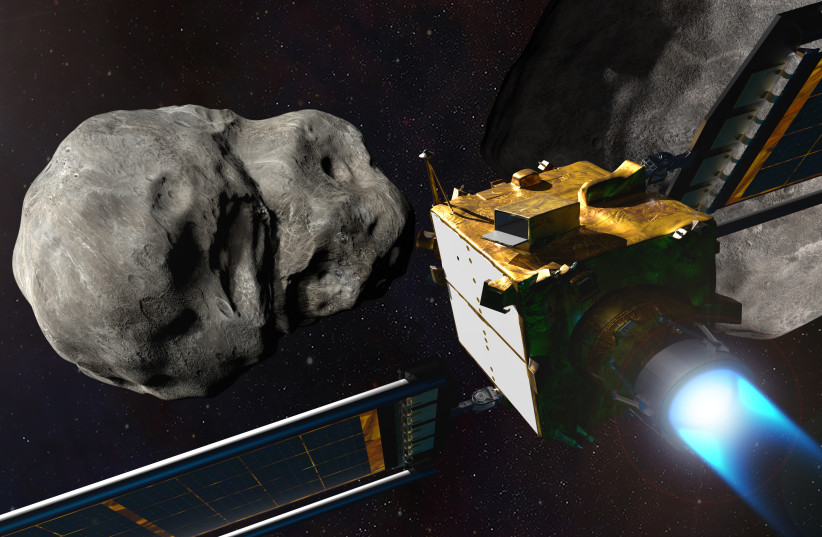A NASA-funded asteroid tracking system has reached a major milestone after being the first asteroid tracking system of its kind able to scan the entire dark sky every 24 hours for near-Earth objects (NEOs) that could pose a possible impact risk.
The tracker, known as the Asteroid Terrestrial-impact Last Alert System (ATLAS), is a state-of-the-art detection system operated for NASA's Planetary Defense Coordination Office (PDCO) by the University of Hawa'i's Institute for Astronomy.
The system first began operating in 2015 with a single telescope. In 2017, it began operating with two telescopes.
Currently, however, the project gained two more telescopes, one in South Africa and another in Chile, for a total of four. This allows ATLAS to survey a quarter of the night sky without a blind spot.
The reason this system exists is simple: Spotting near-Earth asteroids that could potentially hit the planet.

To date, ATLAS has done exactly that, having found over 700 different NEOs, including two very small ones - 2019 MO and 2018 LA - that actually did impact Earth.
“An important part of planetary defense is finding asteroids before they find us, so if necessary, we can get them before they get us” NASA PDCO NEO observations program manager Kelly Fast said in a statement.
“With the addition of these two telescopes, ATLAS is now capable of searching the entire dark sky every 24 hours, making it an important asset for NASA’s continuous effort to find, track, and monitor NEOs.”
Detecting asteroids is important, as an asteroid impact is one of the most dangerous possible natural disasters that could befall humanity.
The last major asteroid impact to occur was in 2013 when a 20-meter asteroid exploded over Chelyabinsk, Russia. While the impact itself wasn't severe, the shockwave caused thousands of windows to shatter and saw many injured and in need of medical attention due to the shattered glass.
Avoiding the possible dangers of an asteroid impact is one of the primary goals of NASA's PDCO. Another mission of theirs, the Double Asteroid Redirection Test (DART) Mission, seeks to test a possible method of stopping an asteroid impact via a deflection, which is essentially punching an asteroid with a specially-designed spacecraft to slightly nudge it off course.

According to research from the Davidson Institute of Science, the educational arm of Israel's Weizmann Institute of Science, an asteroid over 140 meters in diameter would release an amount of energy at least a thousand times greater than the energy released by the first atomic bomb if it impacted Earth. Something even larger – over 300 meters wide like the asteroid Apophis – could destroy an entire continent. An asteroid over a kilometer in width could trigger a worldwide cataclysm.
Smaller asteroids would be less damaging, but as the Chelyabinsk impact shows, they can still cause significant damage to a locality.
Unfortunately, when it comes to these smaller asteroids, ATLAS won't be able to spot them in time for them to be deflected. Rather, it will only get a week or so.
“That’s enough time to evacuate the area of people, take measures to protect buildings and other infrastructure, and be alert to a tsunami danger generated by ocean impacts,” ATLAS project lead John Tonry said in a statement in 2017.
And with ATLAS now able to offer more coverage than ever before, humanity is just a little more prepared to take precautions against a possible disaster.
Of course, ATLAS does have one other issue: it cannot detect asteroids approaching Earth during the day or from the direction of the Sun.
However, the NEO Surveyor space telescope will hopefully be able to help with that, having recently received authorization to push forward in development. The telescope's infrared technology will help discover more NEOs, including those otherwise hidden by sunlight.
“We have not yet found any significant asteroid impact threat to Earth, but we continue to search for that sizable population we know is still to be found. Our goal is to find any possible impact years to decades in advance so it can be deflected with a capability using technology we already have, like DART,” said NASA planetary defense officer Lindley Johnson.
“DART, NEO Surveyor, and ATLAS are all important components of NASA’s work to prepare Earth should we ever be faced with an asteroid impact threat.”
